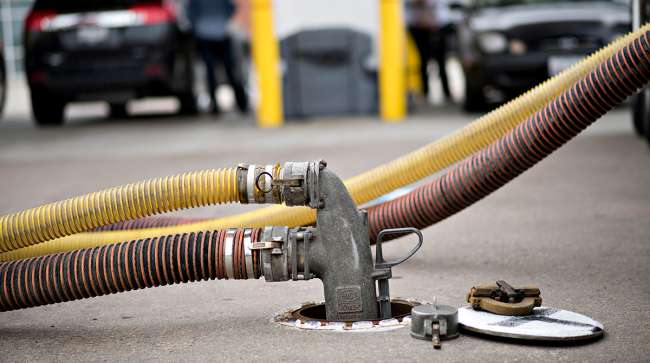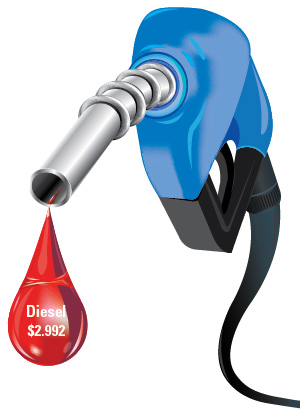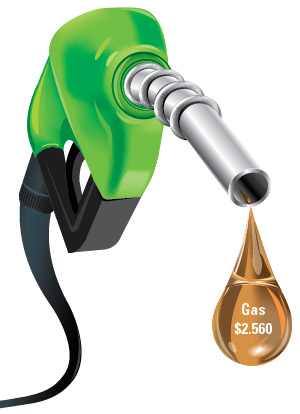Diesel Drops 1.5¢ to $2.992 a Gallon

The U.S. retail diesel average declined 1.5 cents to $2.992 a gallon, the Department of Energy reported March 5.
Truckling's main fuel has fallen in price four consecutive weeks totaling 9.4 cents. Diesel costs 41.3 cents more than a year ago, DOE reported after its survey of fueling stations.

The average price of diesel declined in every region of the country except for the West Coast less California, where it was unchanged from the prior week, according to DOE’s Energy Information Administration.
Gasoline rose 1.2 cents to $2.560 a gallon, DOE said. It climbed the most in the Gulf Coast region at 2.3 cents, according to information from EIA.
Crude oil rose the most in two weeks March 5 as stockpiles at the largest U.S. storage hub are seen draining further, Bloomberg News reported.
Futures gained 2.2% March 5 after data-provider Genscape Inc. was said to report that inventories dropped in Cushing, Okla., according to two people with knowledge of the report. Tanks there already are at the lowest level since 2014, after 10 straight weeks of decline. Signals that the American economy is booming also are supporting crude prices.

Draws at Cushing will continue, Bob Yawger, director of futures at Mizuho Securities USA Inc. in New York told Bloomberg, as long as near-term futures contracts trade higher than later ones, a market structure known as backwardation that discourages storage. “Why would anybody want to auto-lose money by storing crude oil?” Yawger said.
The U.S. benchmark crude has traded mostly above $61 in past weeks as the Organization of Petroleum Exporting Countries works to cut output as part of their supply agreement, according to Bloomberg.
The International Energy Agency said that closer to 2023, global markets will start to tighten and warned that more investment is needed to meet growth in consumption and to make up for production lost to natural declines.
Crude inventories in Cushing decreased 600,000 barrels last week, according to a forecast compiled by Bloomberg News.
“The trend in global inventories shows that the market is fundamentally undersupplied and that emphatically remains the case,” Pavel Molchanov, an energy research analyst at Raymond James in Houston, told Bloomberg. The drawdown in inventories should continue through to near the end of this year, he said.
West Texas Intermediate for April delivery advanced $1.32 to settle at $62.57 a barrel on the New York Mercantile Exchange. Total volume traded March 5 was about 18% below the 100-day average.
Brent for May settlement rose $1.17 to end the session at $65.54 a barrel on the London-based ICE Futures Europe Exchange. The global benchmark traded at a $3.15 premium to May WTI.
Yet, concern that U.S. crude output, already at a record, will continue to climb has capped any significant rallies. The nation will dominate global oil markets for years to come, satisfying 80% of global demand growth to 2020, IEA also said in its report March 5.

